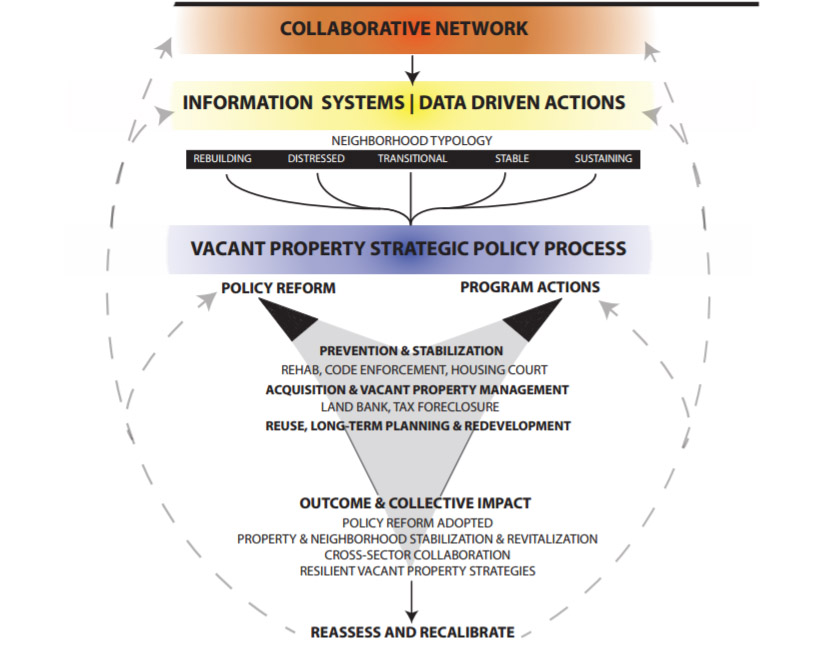One inescapable and overarching conclusion arose from our years of research, field work, and convenings: Effective vacant property reclamation requires a policy system that can become adaptive and resilient to change.
Our approach rests on principles of adaptive resilience that can help communities adopt a policy system to prevent, abate and reclaim vacant properties. Policymakers, practitioners, and researcher can use our model to diagnose their current efforts, identify gaps, and then adapt innovations from other communities. In places recovering from neighborhood decline and blight, they take proactive, strategic actions that rely on the interplay and reassessment of three critical components of a resilient policy system:
- Collaborative networks of public officials, nonprofits, businesses, and civic leaders, and community members: These serve as the initial catalysts to change and implement current policies and practices forging new partnerships and acting as stewards of their vacant properties agendas and initiatives.
- Real property information systems with data-driven actions: A resilient policy system relies on data to drive its decisions from policy design and neighborhood strategies to code enforcement actions. Communities often create data intermediaries that can curate diverse multi-agency databases and synthesize that information for local policymaker and community organization.
- Portfolio of strategic and responsive policies and programs that prevent, abate, acquire, reclaim and reuse vacant properties: These policies and programs include code enforcement, rehabilitation resources, land banks, and neighborhood and citywide urban greening, revitalization, remediation, and regeneration plans and initiatives.

